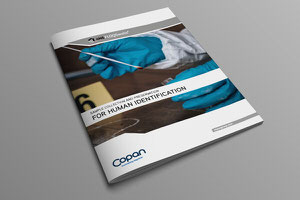News
Main
Since the first use of DNA fingerprinting, forensic genetics has rapidly evolved. Today, scientists are implementing quicker, more specific, and more sensitive tools that could soon be applied to criminal cases and represent the future of genetic forensics investigation. That’s why now, more than ever, the importance of a neat evidence collection seems clear.
Compliant with the latest standards
To answer this need, we were the first swab manufacturer to obtain ISO 18385 compliance for its forensics (4N6) products, implementing a quality system that minimizes the risk of hDNA contamination during the manufacturing process, a mandatory requirement for the global forensic community. Today, our FLOQ technology enables forensic scientists to increase the amount of human DNA recovery from every sample, facilitating the processing and ensuring optimal sample integrity.
Successful investigations begin with accurate evidence collection
Even with the most advanced collection devices, the wide range of surfaces and materials from which the evidence can be collected could challenge investigators to choose the proper collection method case by case: which swab to use? Does it need to be moisturized? Which swab motion to use when collecting?
Errors in collecting and handling biological evidence can result in their exclusion from the trial, highlighting the necessity of proper sample collection and storage.
By gathering the most relevant peer-reviewed papers, a dense bibliography, and unpublished data obtained with close collaboration with forensics professionals, we conceived this guide to forensic sampling to help forensics professionals orient through the jungle of evidence collection methods, choose the appropriate one according to any situation, and ensure the success of their investigation.












